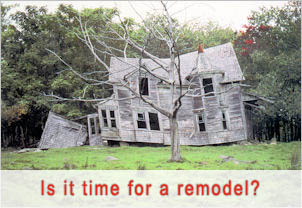
Building up and building out are the primary methods of adding space to a home, and each has a different impact on your property’s value. Building up implies adding a new floor, often employed when land is tight or zoning restrictions limit footprint. Building out adds rooms on the ground level, which suits lots with space and can expand living spaces without stairs. Both add value to a home’s sale price, but it varies based on location, design and local market demand. Understanding the benefits of each approach allows owners to invest intelligently. To provide perspective, this post will reveal the value impact, cost, and fit for both building up and building out, with real examples and expert insights.
Key Takeaways
- Both building up and building out provide advantages in adding value to a home, with returns closely tied to local market trends, construction costs and resale potential.
- Building up usually optimizes the amount of space without sacrificing your yard, but building out can provide more design freedom and easier access which affects day-to-day functionality and your family’s comfort.
- Both additions enhance lifestyle quality, but the optimal option is determined by your existing floor plan, lot dimensions, and your family’s changing requirements.
- Careful evaluation of foundation strength, roofline architecture, local zoning laws and surrounding yard space are all necessary prior to choosing an additional plan.
- They need to think about more than just the hard construction costs — including hidden expenses, energy efficiency, future maintenance and insurance changes.
- Being open with contractors and neighbors, being aware of permit requirements and anticipating temporary disruptions will help make your home addition project go smoothly.

Which Addition Adds More Value?
When considering a home addition, owners want to know which addition adds more value—up or out. They want to get the best return on investment, make good use of space, and serve their future needs. Both can impact the value of the home in different ways.
Financial Return
In international markets, a second story is frequently a major value accretive addition by delivering more usable floor space without devouring yard space. Vertical additions–such as new bedrooms or baths–tend to fetch between 47.7% to 52.8% of their value back at resale. Still, outward additions—ground-level extensions—can increase a home’s value, particularly in regions where land is less scarce. Local real estate trends matter: in dense cities, building up may yield higher returns due to lot limits, while in suburban settings, building out can be more appealing. Historical sales data proves that long term value depends on what kind of space you add, and bedrooms and bathrooms never go out of style.
Lifestyle Quality
- Building up saves outdoor space, allowing homes to maintain yards or play areas.
- Building out can be less disruptive, since it tends to bypass big foundation work.
- Both add square footage that provides breathing room and can relieve the frictions of family life and increase coziness.
- More quarters equals accommodation for home offices, guest rooms or adaptable family areas.
For families who need more space but don’t want to sacrifice their green space, vertical additions are effective. For those who appreciate convenience or eschew stairs, ground-level builds may lean. Both approaches encourage lifestyle changes as families expand or need transition.
Usable Space
Building up adds more square meters without sacrificing the yard. A clever trick in cramped urban lots. New levels can accommodate bedrooms, studies or even small flats. Building out is great for additional living rooms, sunrooms or bigger kitchens. Vertical builds allow you more flexibility in design but can restrict open floor plans. Horizontal additions are simpler to shape for flow, making them perfect for open, modern floorplans.
They each alter a home’s floorplan. Upward constructs may require new stairways, whereas outward ones can generate broader, more open spaces.
Future-Proofing
Both ways help future-proof. Upward constructs allow homeowners to add additional space down the road, assuming the building permits. These ground-level additions can sometimes be expanded sideways if you have the land to do so. Both create long-term value, but local ordinances and lot sizes may restrict choices.
Long-term, more space means more choices.
Zoning laws can restrict further builds.
Upward builds need strong structures.
Aesthetic Appeal
Upward additions can add bold new rooflines and really make a house pop. Outward builds merge into gardens and allow owners to sculpt patios or decks. Both can complement the style of the main house with proper design. Landscaping raises the appeal of ground-level additions, while vertical builds provide attention-grabbing height.
Analyze Your Property
All home additions begin with a close examination of structural constraints, community regulations, and the individual character of your lot and home. The decision to build up versus build out is influenced by these considerations and can impact cost, complexity, and value.
Foundation
You need a good base if you plan to build a second story. You need a professional to determine whether your existing foundation can support additional loads. A lot of older homes require retrofits – adding steel beams, pouring new footings, etc. For single level extensions, such as a garage, the construction could be more straightforward but still necessitates a robust base. Other locations require fresh concrete pads or slab additions. Soil type is a big part. Sandy soils move more and require deeper footings. Clay can swell and pop cracks. Repairing or supplementing a foundation is expensive—up to 30% of the budget on occasion. If you’re in a region with stringent building codes, the additional inspections increase the timeline and the fees.
Lot Size
Small yards restrict how far you can build out, particularly in the tight neighborhoods with the densest home development. Research Your Yard If there isn’t much available space, going vertical is the primary option. Rules on setbacks and land use inform you how near you can build fences or sidewalks. Some states require lots to be a certain size prior to building additions. Neighbors count as well. Their properties might influence what’s permitted — particularly if a high extension impedes sunlight or views.
Roofline
Your roof’s shape and pitch determine how feasible it is to add a floor. Steep roofs sometimes require full rebuilds, which increases expenses. It’s difficult to maintain the appearance of the house with significant roof modifications. Zoning laws occasionally impose a height limit. This may prevent you from putting in an additional floor, even if the foundation could support it.
Home Layout
Analyze your property – check your floor plan to determine where new rooms fit best. Building up is great for additional bedrooms or a laundry. Build out is simpler for adding to kitchens or living rooms. Flow of movement is important. A bad floor plan just makes a house feel cramped or odd. Consider how each option aligns your long-term needs.
Navigate Rules and Costs
Understanding the rules and costs is essential for any home addition. Zoning laws and permits and budgets all determine what’s doable. You’ve got to account for both obvious and lurking fees or you’ll be derailed. Each addition has its own cost and regulatory challenges. Use a checklist before starting: review local building codes, HOA rules, and zoning. Find out what types of permits are necessary, and be aware of the approval timeframe. Navigate rules and costs.
Construction Costs
To build up, like adding a second story, usually costs you more than to build out. The necessity to remove the existing roof and reinforce the structure increases the cost. Here’s a breakdown of typical costs (in metric):
Addition Type | Materials | Labor | Permits | Avg. €/m² |
Second/Third Story | High | High | High | 1,930–2,690 |
Ground-Floor (Out) | Medium | Medium | Medium | 1,500–1,930 |
Attic/Bump-out/Over-Garage | Low | Low | Medium | 1,075–1,500 |
Labor is the largest expense, then materials and permits. Horizontal additions are less disruptive and typically cost less per square meter than vertical ones. Financing might involve home equity loans, personal loans, or refinancing.
Hidden Expenses
Sneaky costs can catch even careful planners off guard. Plus, moving out for safety, storing furniture, and temporary rent or hotel fees accumulate quickly. Plan or design changes mid-project spike costs, so budget 10–20% additional for unknowns. Delays—typically weather or sluggish permits—translate into extended rental holds and increased man-hours.
Permits & Zoning
Consult local zoning laws and HOA rules ahead of time. Other neighborhoods restrict how tall or wide you can build, or what styles are permitted. Whether to build up or out, you’ll have to get permits and inspections. These can take weeks or months to obtain. Vertical builds might require additional permits, particularly for any structural modifications. Zoning can confine your design, so check over all bylaws before you start sketching up plans.
Beyond Square Footage
Home additions are about more than square footage. Each option—building up or building out—carries its own impact on energy consumption, upkeep, insurance, and your lifestyle at home. Owners weigh many things: land prices, neighborhood safety, cost to build, and what buyers want. Beyond square footage.
- Energy use and heating/cooling needs
- Ventilation and window placement
- Materials used (such as insulation, windows, flooring)
- Climate and local weather
- Placement of new structures (above or beside existing)
- Size and use of added rooms (bedroom, sunroom, suite)
- Integration of renewable energy sources
Energy Impact
Even if you add it cleverly, adding space, in any form, requires your heating and cooling systems to work harder. If you add a second or third floor, the upper floors tend to become warmer in summer and colder in winter — particularly if insulation isn’t improved. Building out can expose more walls to outside air, increasing energy demand. Expanding upwards costs between $180 and $250 per square foot, in part because of required structural improvements that can affect insulation and heat loss.
Homeowners can reduce these expenses with time by selecting energizing features. Energy Star qualified windows, for instance, are a hit—83% of buyers desire them. Better insulation, LED lighting and smart thermostats do as well. New spaces are great opportunities to install solar panels — particularly new roofs or sunrooms — to counteract increased bills. In these manners, the energy footprint of an addition can be softened if planned from the beginning, and those elements can elevate home value as well.
Maintenance
New spaces bring more cleaning and fix ups. Attic conversions and over-garage rooms, for instance, require new roofing, HVAC work, and occasionally waterproofing. These pieces need to be inspected over time, implying additional labor and expense. If you opt for premiums, like hardwood floors—coveted by 81% of buyers—expect to schedule care, like refinishing and cleaning.
It’s the kind of material that counts. Less expensive finishes save money in the short-term but can wear out more quickly, resulting in additional repair-face time. Long-term, the expense to maintain a sunroom or suite can accumulate, particularly in extreme climates. Well constructed additions, with quality materials and good design, maintain the home’s overall value by minimizing future repair requirements.
Insurance
When you extend your home, insurance requirements shift. Policies have to be changed to the new size and value of the property. Otherwise you leave yourself underinsured in the event of loss. Additional structures, such as a sunroom or in-law suite, might require additional coverage or rider policies.
It’s important to inform your insurer of the addition immediately. They would have to inspect the new space, verify its code compliant or rebalance premiums. Adding a floor or major room can change your liability: more people, more risk. Screen limits and ensure home and personal property and liability coverage is current.
Livability
More space typically equals more comfort, but not necessarily. Sunrooms or suites can provide luminous, adaptable spaces for working or relaxing. Still, if traffic flow or privacy takes a hit, everyday life gets more difficult.
New floor plans might simplify tasks, like consolidating bedrooms or introducing a bathroom. Bad design causes noise, heat loss or weird spaces.

When to Build Up vs Out
Deciding when to build up versus out determines how well a home meets present and future needs. The answer depends on a number of things, from your own lifestyle to the property regulations and neighborhood market dynamics.
- Review your family’s needs: .* How many additional bedrooms or living spaces will be necessary?). * Need to make it accessible to kids, elders or those with limited mobility? * Long term plans to stay or is this a short term play?
- Check property limits:.* What do local zoning rules say on height and boundary setbacks? * How much yard space is there, and is it worth having for recreation or gardening? * Are there overlays like heritage overlays or view corridors?
- Look at neighborhood trends: * Are the majority of homes in the area one or two stories?
- Do buyers around you in expensive areas prefer big yards or big houses?
- Is there an appetite for distinctive spaces or opulent perks?
- Consider lifestyle and personal taste:.* Do you need more outdoor entertaining space, or favor privacy and views? * Would construction disruption be manageable or too invasive? * Do you care about being able to stay in the home during work?
Choose Up
Building up works on small lots with limited yard space. It’s useful if zoning permits them to go taller but limits footprint. Building up can be more expensive per square meter, particularly with additional structural support, but is a great option if building out isn’t an option.
Building up saves yard space. Families with kids or dogs (or just gardening enthusiasts) tend to like their ground space nice and open. Vertical additions allow for creative room layouts: master suites with balconies, lofts, or multi-level open spaces all become possible. These updates can introduce additional natural light and, if amenable local topography permits, even city or landscape views. Interestingly, to build up often implies the family must move out temporarily, as work is disruptive.
Choose Out
Build out is best if you have plenty of land and want to avoid the expense or inconvenience of vertical construction. It’s typically more affordable for single-story homes and the construction is less disruptive—you can often remain living in the home throughout.
Horizontal expansion is perfect for adding kitchens, living rooms, home offices, gyms, patios, or sunrooms. These spaces flow effortlessly into the outdoors providing seamless shifts for entertaining or unwinding. That’s particularly appreciated in environments where outdoor living is paramount. The tradeoff of course is less yard space, which can be an issue for play areas or gardens or future projects.
Outward additions allow you to better tie rooms together and connect indoor and outdoor living. Big glass doors, decks, or covered patios will all add usable space and light. This allure goes perfectly with open-plan living and access to gardens or pools.
Conclusion
So build up, or build out, either can add real value, but the best choice has a lot to do with your home, your needs, and your area. Certain houses require more space up, while others function best laid out. Zoning, budget and layout carve the right course. Additional square footage can increase both livability and value, but clever design trumps scale every time. Consider roof lines, yard space and how people actually live in rooms on a daily basis. Local rules and build costs can swing the balance. Chat with a veteran builder familiar with both. Want to share your own story or ask questions — leave a comment or ping me. Real feedback from real projects helps us all get better at making homes work, not just look bigger.
Frequently Asked Questions
1. What is the main difference between building up and building out?
Building up elevates your home, building out extends the ground floor. Both alter your home’s layout and impact your property value in different ways.
2. Which option generally increases home value more?
Building up generally adds more value in regions where land is scarce. Building out may be better if you have the space and your local ordinances permit. Location and buyer demand are factors.
3. What factors should I consider when choosing to build up or out?
Factor in land size, local building codes, costs and your family’s needs. Consider disruption, design and neighborhood trends prior to making a decision.
4. Are there different costs for building up versus building out?
Yes. Building up tends to be more expensive per square metre because of additional structural work. Building out may require land prep and impact outdoor space.
5. How do local rules affect my decision?
Height or how far you can extend may be limited by local zoning laws and building codes. As always, check with your local authorities before planning an addition.
6. Does building up or out impact energy efficiency?
Both affect energy consumption. Building up might minimize heat escape and land usage, but building out can maximize sunlight and insulation choices.
7. When is it better to build out instead of up?
If you have the land, and prefer easier access between spaces – building out is better. It steers clear of significant renovations on your home.
Your Dream Home Addition Built by Mares & Dow Construction & Skylights – Let’s Create the Extra Space You’ve Been Dreaming Of
Expand your home’s potential and enhance everyday living with a custom home addition from Mares & Dow Construction & Skylights. With over 40 years of construction experience, we specialize in high-quality additions that seamlessly integrate with your existing structure and lifestyle needs.
Whether you’re planning a new primary suite, second-story expansion, or an in-law unit, we tailor each addition to match your vision, your home’s architecture, and your long-term goals.
Key benefits of our general home addition services include:
• Adding valuable square footage for growing families or multi-use living
• Increasing your property’s value with expert design and construction
• Creating energy-efficient, modern living spaces tailored to your needs
Proudly serving Contra Costa County—including Alamo, Danville, Orinda, Martinez, and San Ramon—Mares & Dow Construction & Skylights is your trusted partner for functional, beautiful, and lasting home additions.
Contact Mares & Dow Construction & Skylights today for a free, no-obligation quote and let’s build your ideal home addition together.
Disclaimer
The materials available on this website are for informational and educational purposes only and are not intended to provide construction, legal, or professional advice. You should consult with a qualified general contractor or industry professional for advice concerning any specific construction project, remodeling plan, or structural concern. Do not act or refrain from acting based on any content included on this site without seeking appropriate professional guidance. The information presented on this website may not reflect the most current building codes, regulations, or industry best practices. No action should be taken in reliance on the information on this website. We disclaim all liability for actions taken or not taken based on any or all of the contents of this site to the fullest extent permitted by law.






 based on
based on 

